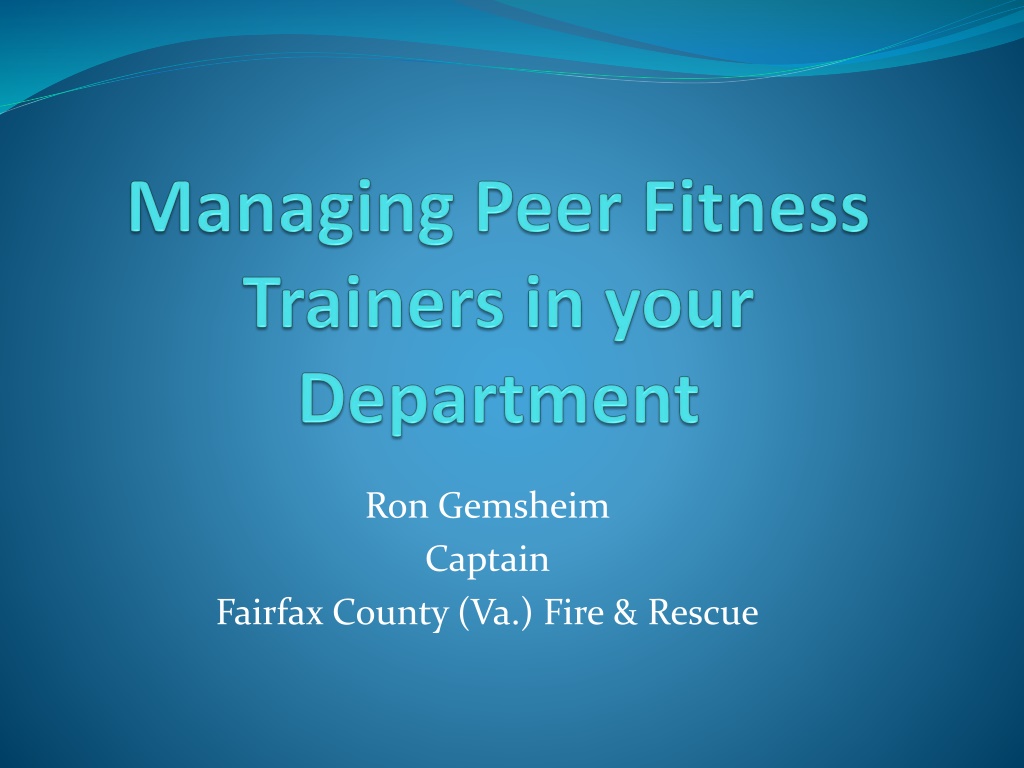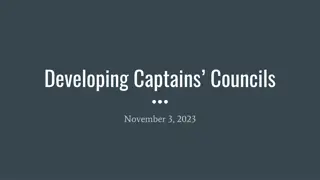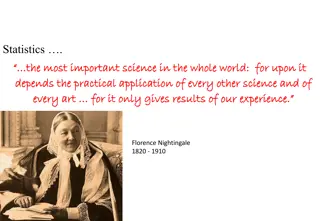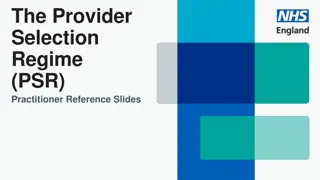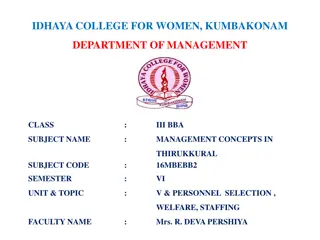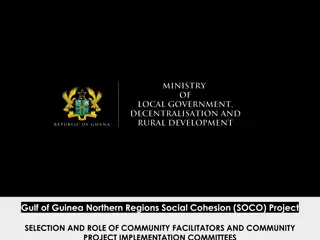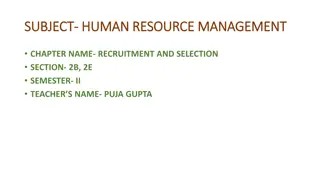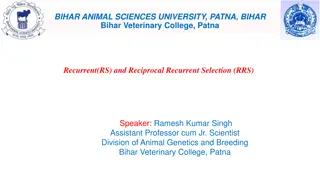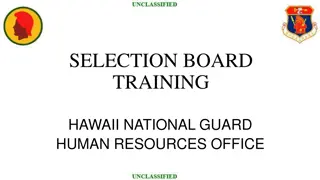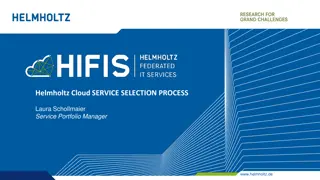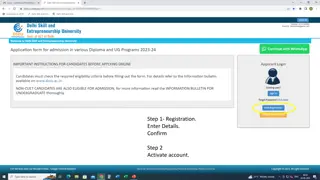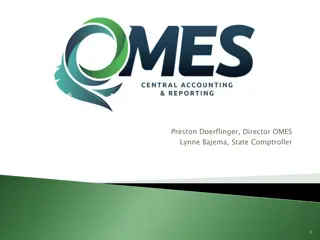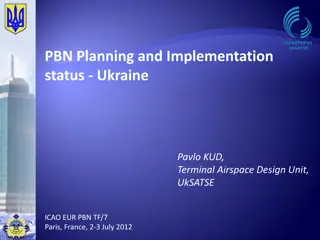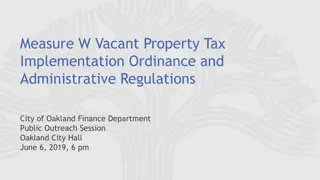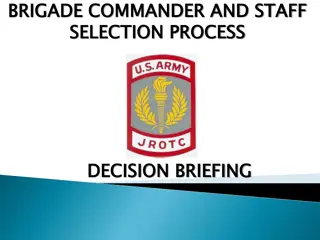Developing a Comprehensive Program for PFT Selection and Implementation
Create a structured program for PFT selection incorporating mission statements, goals, budgeting, areas of use, personnel requirements, time demands, and funding considerations. Emphasize clear mission statements, defined goals, proper budget allocation, strategic funding approaches, and post-implementation monitoring strategies.
Download Presentation

Please find below an Image/Link to download the presentation.
The content on the website is provided AS IS for your information and personal use only. It may not be sold, licensed, or shared on other websites without obtaining consent from the author. Download presentation by click this link. If you encounter any issues during the download, it is possible that the publisher has removed the file from their server.
E N D
Presentation Transcript
Ron Gemsheim Captain Fairfax County (Va.) Fire & Rescue
Getting Started Develop mission statement and goals. Determine areas of use and number of PFT s required. PFT Selection Time requirements or demands of PFT s. Develop a budget. Determine available funding.
Getting Started Develop Mission Statement and Goals Mission Statement Description of the program s purpose that is clear, direct, and keeps the PFT s focused within the scope of the program. Goals Something to be accomplished to keep the program moving forward.
Getting Started Determine Areas of Use and Number of PFT s Required Areas of use How will the PFT s be used in the program? Number of PFT s needed Tasks Workload Number of personnel in your department Budget
Getting Started PFT Selection Personality Previous Training Availability Motivation Diversity
Getting Started Time Requirements or Demands of PFT s What will be required of them once accepted to the program? Participation Areas/Time Committees CEC s (On own time or FD time)
Getting Started Develop a Budget Develop based on your long term goals and objectives. Certification Equipment Overtime Training (CEC s, conferences) Uniforms Can be implemented in Stages
Getting Started Determine Available Funding Work with city council to secure funding for the program. Matching fund program Cost savings of program (Risk Management) Consider teaming up with other Fire Departments (Regionalize) Grant Funding www.firegrantsupport.com Seek out additional information and approaches used by other departments.
After the Program is Established Develop an implementation strategy. Internal education/marketing. Monitor progress. Collect Data. Meet and review program regularly.
After the Program is Established Develop an Implementation Strategy After the concept has been accepted, the program should be officially adopted. May be done through an administrative process. General order signed by the fire chief Union contract negotiations Memorandum of understanding
After the Program is Established Internal/External Marketing Educating all parties involved in the process regarding all aspects of the program is CRUCIAL to the success of the program. Emphasize benefits and safeguards Support from labor/management Health benefits for members Cost savings for department Testimonials
After the Program is Established Monitor Progress Progress should be regularly reviewed and periodically assessed for possible changes. Is program meeting needs of the members? Are the members using the program? Why/Why not?
After the Program is Established Collect Data Baseline data collection is essential to future benchmark and comparison data. The value of future cost-benefit support needs good baseline data.
After the Program is Established Meet and Review Program Regularly It is essential the program be reviewed periodically to measure progress, evaluate effectiveness, and ensure the objectives of the program are still valid. The information from evaluations will help identify program strengths and areas for improvement.
PFT Manual Mission Statement and Goals Scope of Practice Conduct and Demeanor Sample Exercise Programs Resources Assessment Forms CD s/DVD s
Certification/C.E.C.s Initial certification IAFF/IAFC/American Council on Exercise PFT Program 5 day course Students are trained in: Anatomy Kinesiology Exercise Physiology Exercise Programming Nutrition Exercise techniques Fire service specific knowledge Find information about class at www.iaff.org
Certification/CECs (cont.) CEC s Must obtain every 2 years for recertification Obtained by: Attending conferences In-house classes Monthly fitness magazine quizzes
Areas for PFT Involvement Prior to being hired: Job Fairs/Recruitment CPAT Mentoring CPAT Proctors Pre-Recruit School Training Program
Areas for PFT Involvement Recruit Training Daily PT training during probie school. Fitness assessments throughout probie school to show progress. Family day. Mentoring program following graduation.
Areas for PFT Involvement Incumbent Firefighter Training Fitness assessments. Personalized exercise programs/nutritional advice. Station visits. Shift workouts. Fitness classes. New equipment instruction. Incumbent testing. Fitness Challenge.
Other Areas of Involvement Equipment maintenance/purchase. O.S.H. committee member. Officer training. Program design (civilian employees, families) Workout books for stations. Newsletter Q&A on department website
Keeping the PFT Motivated Give them ownership of program Assign Project Send to conferences/classes Uniforms Purchase resources for the PFT
Keys to a Successful Program Proper Personnel Selection P.R. for the program Pictures and bios of PFT s Stay Current Be Visible Station visits Be Professional
Questions & Answer Ron Gemsheim Captain, Fairfax County (Va.) Fire & Rescue Ian Crosby Wellness Coordinator, Calgary (Ca.) Fire Department George Cruz Captain, L.A. County Fire Department
